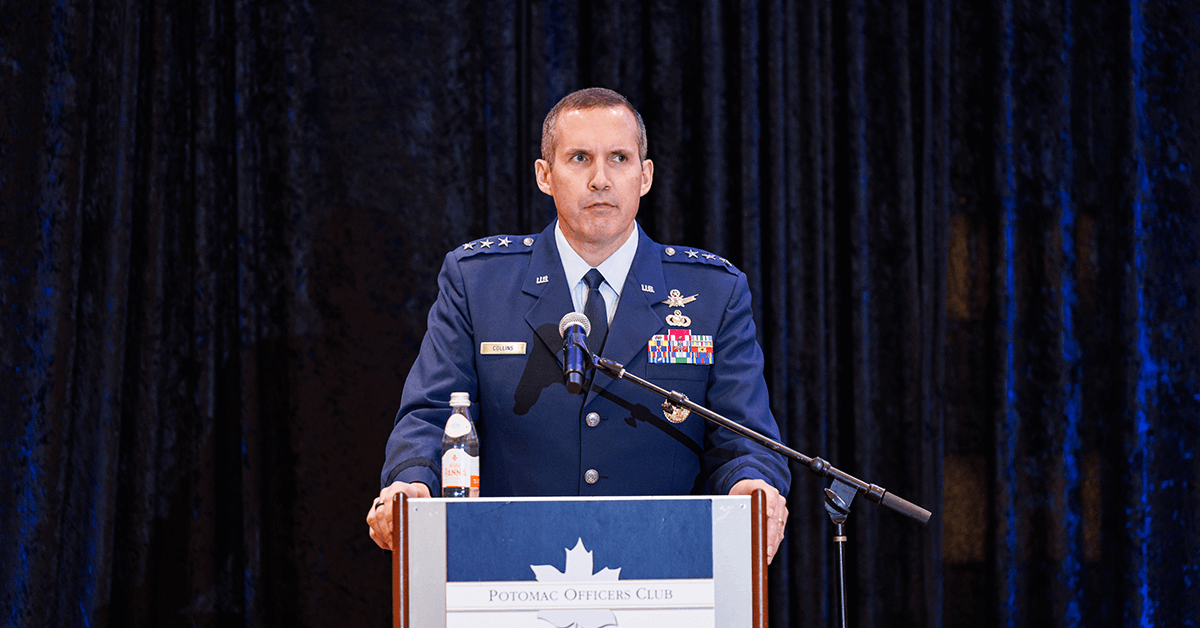Missile Defense Agency Director Lt. Gen. Heath Collins said the agency is working more closely than ever with partners like the U.S. Space Force and the Space Development Agency to respond to evolving missile threats and bolster our space resilience.
“We see an ever increasing relationship of reliance on space, both us counting on space, as well as us contributing to the space mission area as we go forward,” the 2024 Wash100 Award winner said during his keynote speech at the Potomac Officers Club’s 2024 Space Summit on Tuesday.
Vote for Lt. Gen. Collins as your favorite Wash100 Award winner at Wash100.com, and click here to read his full Wash100 profile.
“We see a future of increased integration with the Space Force, certainly using the systems that we’ve come to rely on all this time, SBIRS and follow-on PEO, GEO and MEO opportunities for missile warning to continue to give us those cues. We’ll continue to need secure comms and we’ll continue to need secure PNT, precision navigation and timing capability,” Collins added.
Collins also noted that the development of hypersonic weapons and missiles by our nation’s competitors is increasing MDA’s urgency to adapt our missile defense capabilities. Hypersonic missiles have drastically changed the global missile threat landscape, underscoring the importance of space in our nation’s missile defense efforts.
Hypersonic missiles are “designed to avoid the detection systems that we put in place,” said Collins. “With that threat evolution, that has really driven us to take a look at our entire kill chain of missile defense and look to energize that, change that for where the threat is going.”
Collins said hypersonic weapons are increasing MDA’s reliance on space ground-based systems and space domain awareness going forward.
He also highlighted the agency’s efforts to “bring in new fire control-quality satellite constellations that can pick up, track and hold hypersonic maneuvering targets anywhere in the world at any time.”
MDA’s “first step into that realm” of capabilities came on Feb. 14 when the agency launched two prototype demonstration Hypersonic and Ballistic Tracking Space Sensor satellites, known as HBTSS, together with the Space Force.
“Those two satellites are only two weeks old now in orbit. They’re going through launch and early orbit testing, and as that transitions over, we look forward to a future with Derek Tournear and the Space Development Agency to proliferate a constellation of fire control tracking satellites into our future,” Collins said, referring to Dr. Tournear’s keynote speech at the summit earlier in the day.
Don’t miss POC’s next summit, the 5th Annual AI Summit on March 21! AI experts and leaders from NGA, CIA, DOD, DARPA and other agencies will convene to share their insights into the future of the AI field. Register here.

















